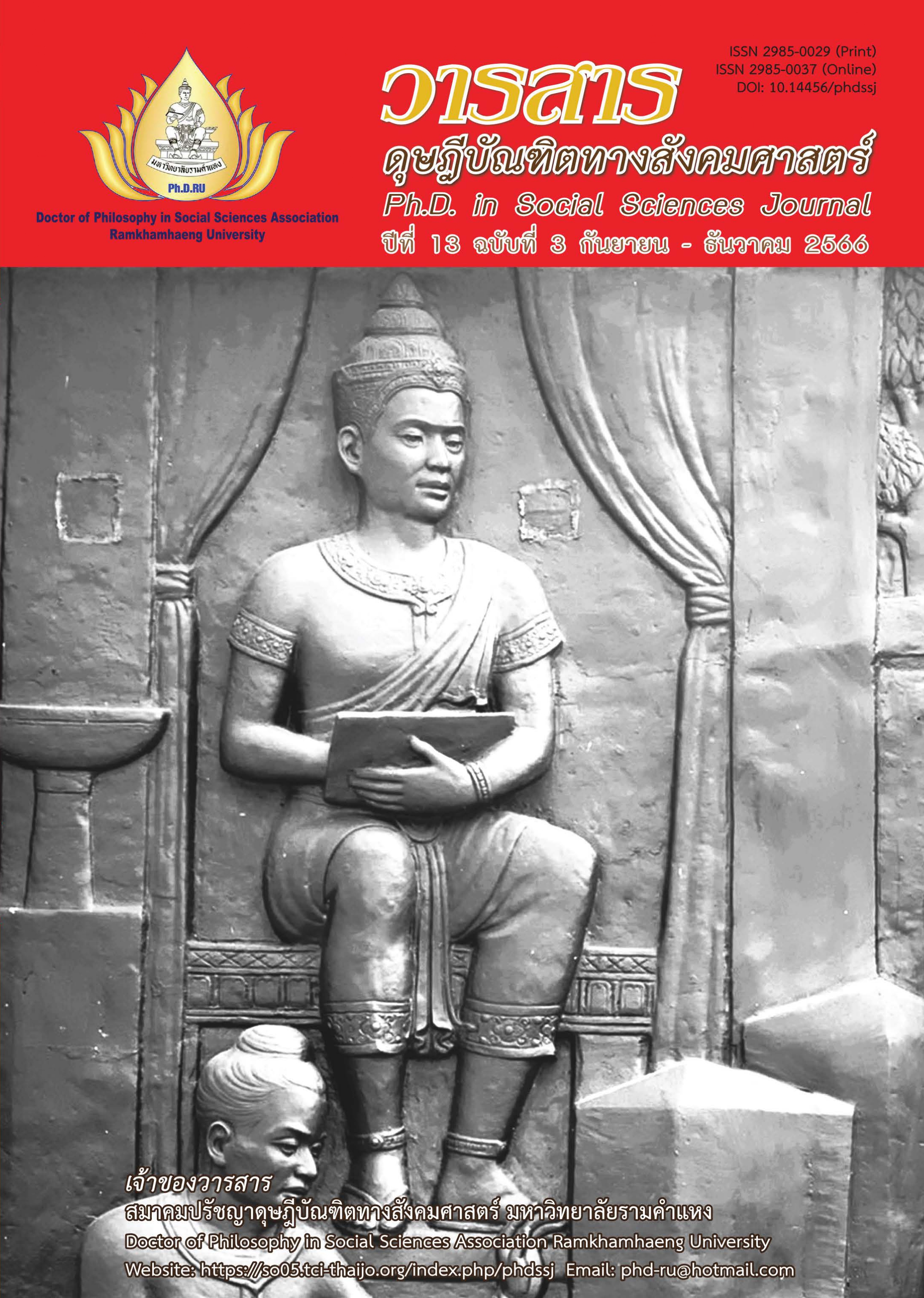อิทธิพลของการตลาดเชิงเนื้อหาและการตลาดแบบผู้ทรงอิทธิพลทางความคิดที่มีต่อความภักดีในตราสินค้า โดยมีการแสดงออกถึงตัวตนผ่านตราสินค้าและความอิจฉาริษยาในตราสินค้าเป็นตัวแปรส่งผ่าน: กรณีศึกษาตราสินค้า Apple
Main Article Content
บทคัดย่อ
บทความวิจัยนี้มีวัตถุประสงค์เพื่อศึกษาอิทธิพลทางตรงและทางอ้อมของกลุ่มตัวแปรดังต่อไปนี้ การตลาดเชิงเนื้อหาที่นำเสนอโดยเจ้าของตราสินค้า การตลาดแบบผู้ทรงอิทธิพลทางความคิด การแสดงออกถึงตัวตนผ่านตราสินค้า และความอิจฉาริษยาในตราสินค้าที่มีต่อความภักดีในตราสินค้า เป็นการวิจัยเชิงปริมาณ เลือกใช้วิธีการสุ่มตัวอย่างแบบกลุ่มโดยเก็บข้อมูลจาก ผู้บริโภคคนไทยที่ใช้ตราสินค้า Apple และใช้อินเทอร์เน็ต สื่อดิจิทัลและเครือข่ายสังคมออนไลน์ในชีวิตประจำวัน ซึ่งมีประสบการณ์การรับรู้ข้อมูลข่าวสารต่าง ๆ ที่นำเสนอโดย Apple และจากผู้ทรงอิทธิพลทางความคิดในด้านไอที จำนวน 460 ตัวอย่าง เครื่องมือที่ใช้แบบสอบถามออนไลน์ และสถิติที่ใช้ในการวิเคราะห์ข้อมูล สถิติพรรณนา และการวิเคราะห์สมการโครงสร้าง
ผลการวิจัย พบว่า (1) การแสดงออกถึงตัวตนผ่านตราสินค้าจะได้รับอิทธิพลรวมจาก การตลาดเชิงเนื้อหาเท่ากับ 0.534 และการตลาดแบบผู้ทรงอิทธิพลทางความคิดเท่ากับ 0.290 ตามลำดับ สมการมีอำนาจการพยากรณ์ร้อยละ 57.70 (2) ความอิจฉาริษยาในตราสินค้า จะได้รับอิทธิพลรวมจาก การแสดงออกถึงตัวตนผ่านตราสินค้าเท่ากับ 0.608 การตลาดเชิงเนื้อหาเท่ากับ 0.325 และการตลาดแบบผู้ทรงอิทธิพลทางความคิดเท่ากับ 0.176 ตามลำดับ สมการมีอำนาจการพยากรณ์ร้อยละ 37.00 (3) ความภักดีในตราสินค้า จะได้รับอิทธิพลรวมจาก การแสดงออกถึงตัวตนผ่านตราสินค้าเท่ากับ 0.768 การตลาดเชิงเนื้อหาเท่ากับ 0.453 ความอิจฉาริษยาในตราสินค้าเท่ากับ 0.319 และการตลาดแบบผู้ทรงอิทธิพลทางความคิดเท่ากับ 0.201 ตามลำดับ สมการมีอำนาจการพยากรณ์ร้อยละ 68.80
Article Details

อนุญาตภายใต้เงื่อนไข Creative Commons Attribution-NonCommercial-NoDerivatives 4.0 International License.
บทความวิชาการ บทความวิจัย และบทวิจารณ์หนังสือในวารสารดุษฎีบัณฑิตทางสังคมศาสตร์ เป็นความคิดเห็นของผู้เขียน มิใช่ของคณะผู้จัดทำ และมิใช่ความรับผิดชอบของสมาคมปรัชญาดุษฎีบัณฑิตทางสังคมศาสตร์ มหาวิทยาลัยรามคำแหง (กรณีการทำวิจัยในมนุษย์ ผู้วิจัยต้องผ่านการอบรมจริยธรรมการวิจัยในมนุษย์ และนำหลักฐานมาแสดง)
เอกสารอ้างอิง
Belk, R. W. (1988). Possessions and the extended self. Journal of Consumer Research, 15(2), 139-168.
Bıçakcıoğlu, N., Ögel, İ. Y., & İlter, B. (2017). Brand jealousy and willingness to pay premium: The mediating role of materialism. Journal of brand Management, 24(1), 33-48.
Chioveanu, I. (2008). Advertising, brand loyalty and pricing. Games and Economic Behavior, 64(1), 68-80.
Escalas, J. E., & Bettman, J. R. (2003). You are what they eat: The influence of reference groups on consumers’ connections to brands. Journal of Consumer Psychology, 13(3), 339-348.
Hair, J. F., Black, W. C., Babin, B. J., & Anderson, R. E. (2010). Multivariate data analysis (7th ed.). Pearson.
Hollenbeck, C. R., & Kaikati, A. M. (2012). Consumers’ use of brands to reflect their actual and ideal selves on Facebook. International Journal of Research in Marketing, 29(4), 395-405.
Influencer Marketing Hub. (2021). The state of influencer marketing 2021. Retrieved from https://influencermarketinghub.com/influencer-marketing-benchmark-report-2021
Kaufmann, H. R., Loureiro, S. M. C., & Manarioti, A. (2016). Exploring behavioural branding, brand love and brand co-creation. Journal of Product & Brand Management, 25(6), 516-526.
Keller, K. L. (2001). Building customer-based brand equity. Marketing Management, 10(2), 14-19.
Ki, C. W. C., & Kim, Y. K. (2019). The mechanism by which social media influencers persuade consumers: The role of consumers’ desire to mimic. Psychology & Marketing, 36(10), 905-922.
Leibtag, A. (2014). The digital crown: Winning at content on the web. Elsevier.
Loureiro, S. M. C., Ruediger, K. H., & Demetris, V. (2012). Brand emotional connection and loyalty. Journal of Brand Management, 20(1), 13-27.
Luarn, P., Lin, Y. F., & Chiu, Y. P. (2015). Influence of Facebook brand-page posts on online engagement. Online Information Review, 39(4), 505-519.
Ohanian, R. (1990). Construction and validation of a scale to measure celebrity endorsers’ perceived expertise, trustworthiness, and attractiveness. Journal of Advertising, 19(3), 39-52.
Rowley, J. (2008). Understanding digital content marketing. Journal of Marketing Management, 24(5-6), 517-540.
Sarkar, A., & Sreejesh, S. (2014). Examination of the roles played by brand love and jealousy in shaping customer engagement. Journal of Product & Brand Management, 23(1), 24-32.
Srivardhana, T. (2017). Structural equation modeling of self-image congruence, consumer centric, content marketing strategies, and brand loyalty of leading Thai banks’ facebook followers. Journal of the Association of Researches, 22(1), 256-265. [In Thai]
Srivardhana, T. (2019). Facebook posts for active engagement in Starbucks’s fan page: The mediating roles of brand self-expressiveness and brand jealousy. SVIT Journal, 5(2), 400-417. [In Thai]
Zeithaml, V. A., Berry, L. L., & Parasuraman, A. (1996). The behavioral consequences of service quality. Journal of Marketing, 60(2), 31-46.


